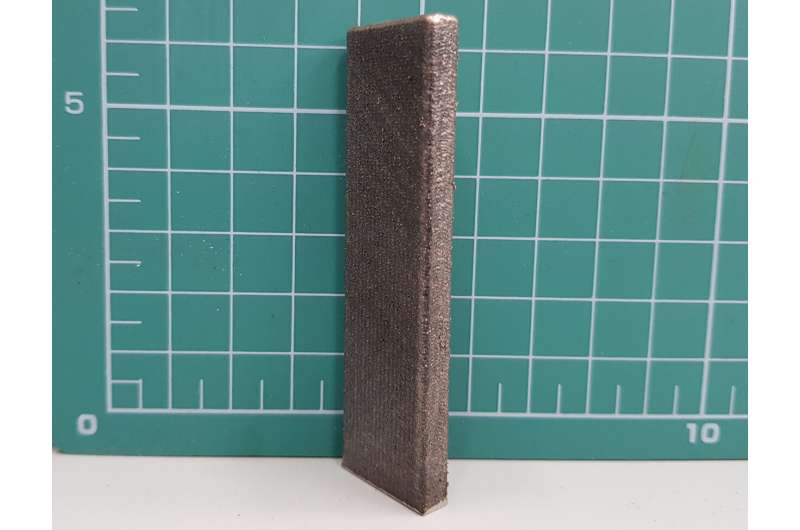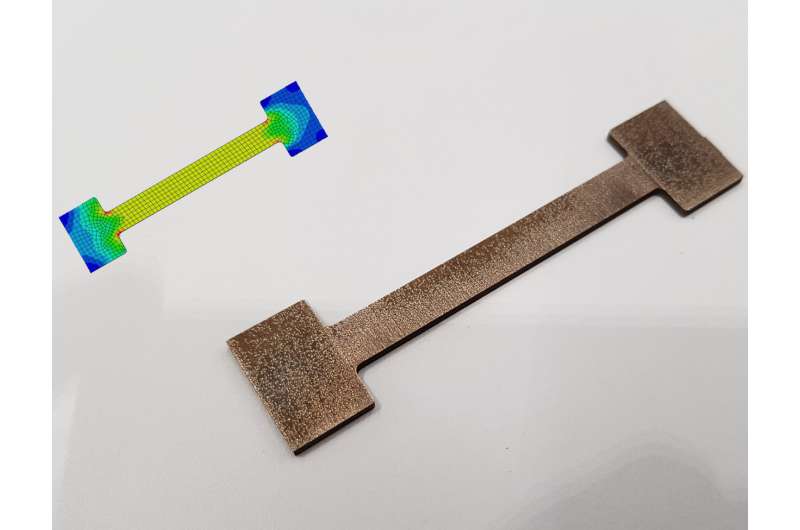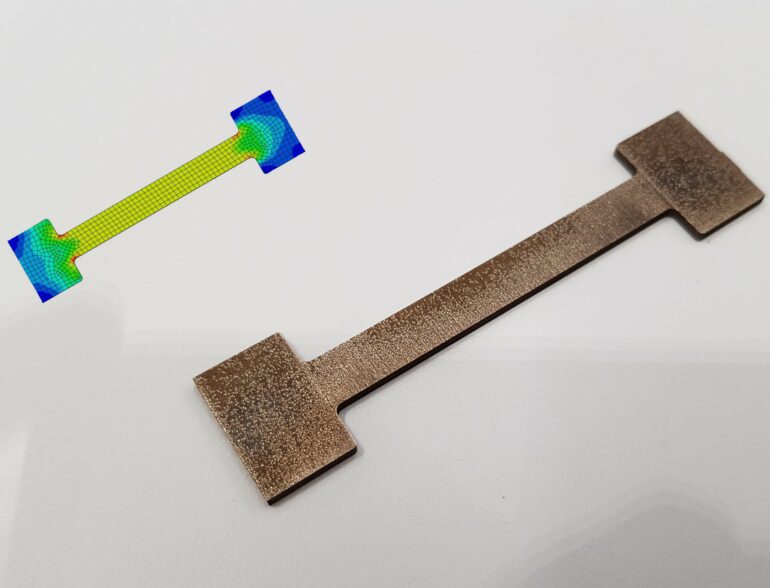Skoltech researchers have used a 3D printer to fabricate samples of bronze-steel alloys previously unknown to materials science and investigated their mechanical characteristics. Blending the distinct properties of bronze and steel, the novel alloys could be used to manufacture combustion chambers for aircraft and rocket engines that would simultaneously benefit from steel’s ability to withstand extreme temperatures and bronze’s capacity to conduct heat away from the chamber and thus prevent the engine from overheating. The study is published in Materials & Design.
“3D printing is promising for manufacturing composite parts, endowed with the properties of the two distinct materials that make up the composite,” Associate Professor Igor Shishkovsky of Skoltech Materials explained.
“Consider, for example, that steel is resistant to the high temperatures created by fuel combustion in an operating engine. This is great, but compared with bronze, steel is a modest thermal conductor, so the engine coolant cannot siphon heat away from it as effectively to prevent overheating and damage. Well, with 3D printing, you can actually get the best of both worlds by manufacturing a combustion chamber that seamlessly goes from being bronze on the inside for better temperature management to being steel on the outside for holding the structure together.”
Shishkovsky was the principal investigator on the study that reported the first-ever synthesis of a bronze-steel alloy using a 3D printing technique called direct laser deposition, which melts and fuses powdered ingredients by a laser beam at every successive point in the metal part just as it’s being created.

A vertical bar made of a quasi-homogeneous bronze-steel alloy manufactured by the researchers. © Konstantin Makarenko/Skoltech.
In fact, the Skoltech team combined bronze and steel in two different ways, obtaining both so-called quasi-homogeneous alloys and sandwich structures. In the former, the two materials are more or less evenly intermixed throughout the sample, while the latter consist of a series of alternating 0.25-millimeter-thick layers of bronze and steel. The researchers used one type of steel but varied its content in the alloy from 25% to 50% and experimented with three different common varieties of bronze.
The study confirmed that the two materials fused well, without defects forming. The team investigated the bronze-steel alloy’s structural and mechanical properties by growing vertical bars from the bottom up and examining their shape, chemical composition, and microstructure. “When something goes wrong, the sample’s shape might get visibly distorted or it might fracture into layers during 3D printing. This usually means that either the materials used are not suitable or the conditions haven’t been set right,” Shishkovsky explained.
Finding no problems at this stage, the researchers proceeded to cut out tiny pieces from different parts of the samples and investigated their internal structure with optical and scanning electron microscopy. The main mechanical characteristics were then obtained in a wide range of mechanical tests of sandwich composites continued up to their destruction. These properties are reported for the first time.

This is an example of a metal sample for mechanical tests. By subjecting it to stress, the researchers measure the material’s strength, identify weak spots, such as the red spots on the stress map, and determine primary modes of failure. © Konstantin Makarenko/Skoltech.
The study’s first author Konstantin Makarenko, a fourth-year Ph.D. student at Skoltech Materials, said, “Now that we have confirmed that steel and bronze can be combined in an alloy and are compatible with 3D printing via direct laser deposition, and we know the mechanical characteristics of the new material, we can explore its possible applications.
“Looking forward, I would like to manufacture and test a steel-bronze combustion chamber at Skoltech, but beyond that, other items are possible and other metal combinations could be used. The next step would be to create turbine blades made of a strengthened superalloy with cooling channels made of bronze. It’s all about combining the benefits of two distinct materials in one seamless product without any welding or other junctures.”
More information:
Konstantin I. Makarenko et al, Mechanical characteristics of laser-deposited sandwich structures and quasi-homogeneous alloys of Fe-Cu system, Materials & Design (2022). DOI: 10.1016/j.matdes.2022.111313
Provided by
Skolkovo Institute of Science and Technology
Citation:
Unlikely union of 3D-printed bronze and steel holds promise for jet engines (2023, January 9)



